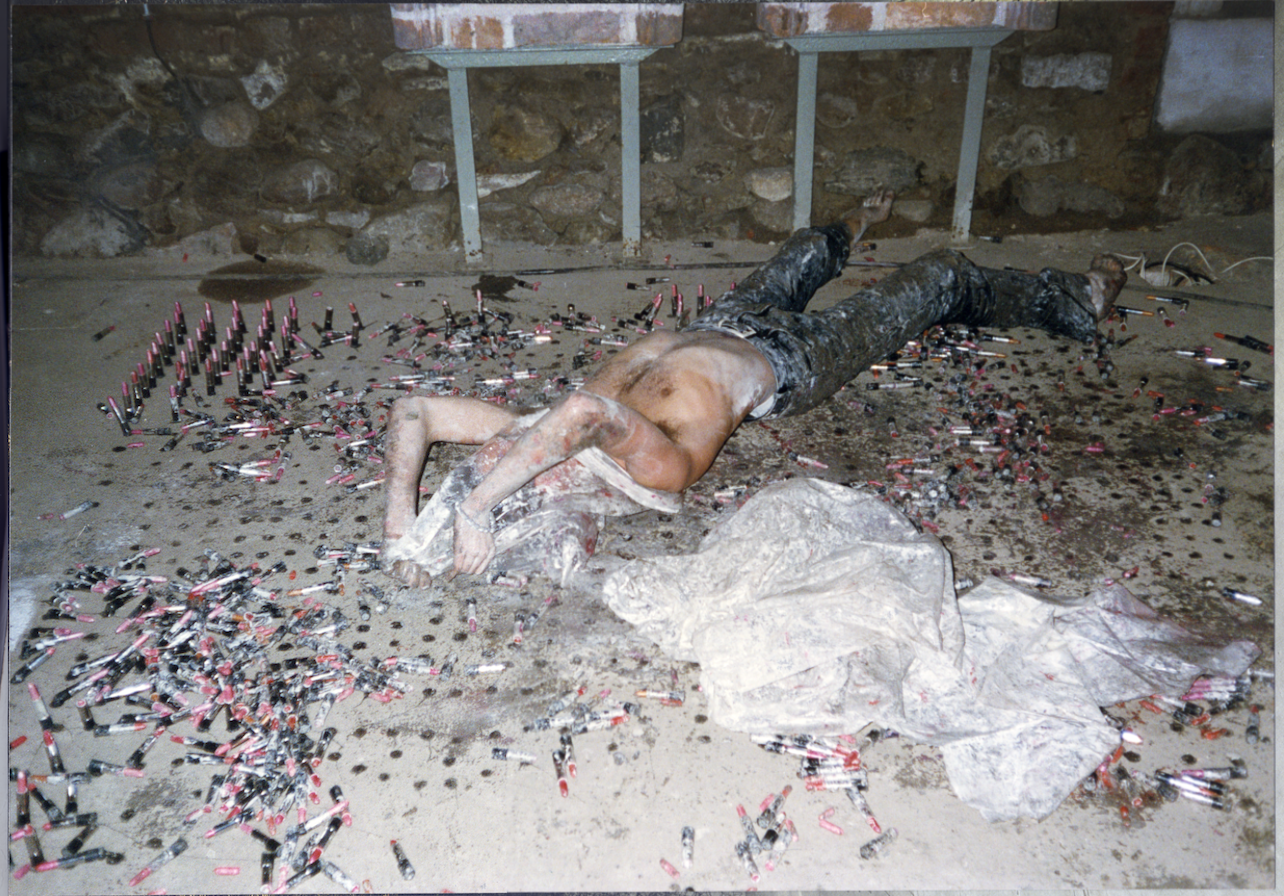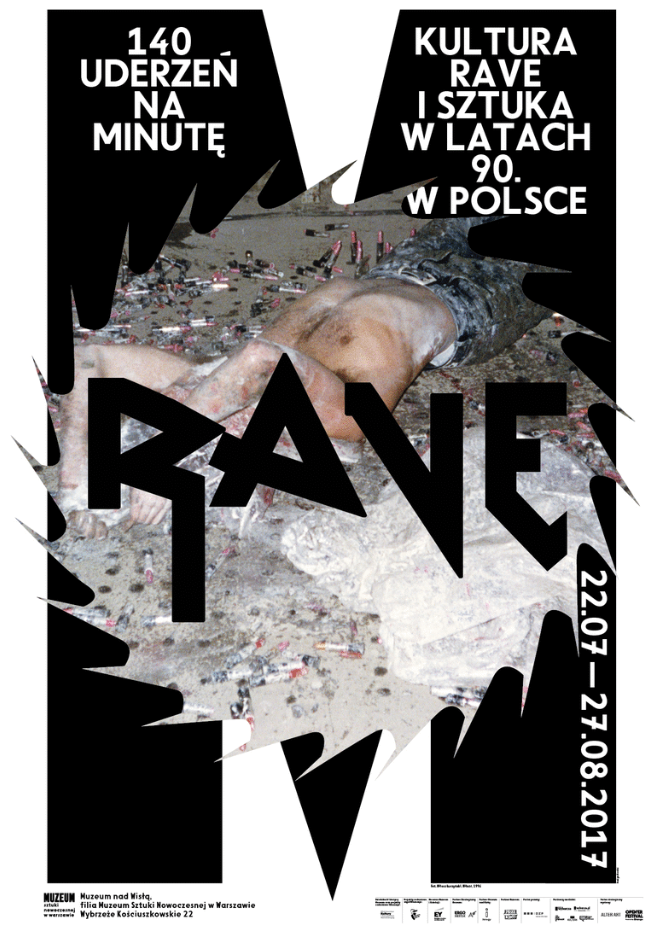Exposition “140 BEATS PER MINUTE RAVE CULTURE AND ART IN 1990S POLAND” Museum of Modern Art Warsaw, 22.07 – 27.08.2017
-photo documentation of performance “Milosc”, TU-Performance, Torun 1995,
-photo documentation of installation “DNA”, Krzysztofory Gallery Krakow, 1995
.

“Milosc”, TU-Performance, Torun 1995
.
The word “rave” is used to describe dance parties with electronic music – mainly techno – that began to appear in Poland together with the political system change in the early 90s, often voicing the naive, but nonetheless authentic optimism of opening up to the world, its civilizational and technological advancement.
The rave/techno culture was the music subculture that appeared after 80s punk, engag-ing visual artists fascinated by how the rave community came together in reaction to the neoliberal atomization, privatization and hierachization of society. It was also a new subculture, after the hippies, to show such interest in the visual. Images were as important for them as dance and music. It was the first time a dance party became an equally important medium for visual artists. Galleries became dance clubs, exhibitions turned into rave parties.
Visual artists were intrigued by a new figure present in rave culture, that of a sample artist — DJ and VJ — who creates his works live from prepared material. As opposed to previous music subcultures and artistic directions, a sample artist fights for his anonymity and contests the existing cultural hierarchies – the divisions between the revered artist and the fascinated fans. Artists interpreted techno as another incarnation of avant-garde, non-literary abstract art of constructivist provenance. By entering into a relation with rave culture, they showed interest in its technological aspect. Here, art is created mechanically. It is a reaction to the appearance of new, mass-scale technologies, such as personal computers and the internet, in the 90s. Art created in the context of rave was another chapter in the history of relations between art and technology, and a direct precursor of current post-internet art.
In the “140 beats per minute” exhibition we are especially interested in the role of rave in relation to the pop tendency of Polish art in the 1990s. In opposition to so-called critical art, artists creating this trend sought more inclusive, non-elitist forms of building communities through art.
********
Kuratorzy: Szymon Maliborski, Łukasz Ronduda
Współpraca kuratorska: Zofia Krawiec
Artyści/artystki:
Paweł Althamer, Rafał Bujnowski, CUKT (Adam Virus Popek, Mikołaj Robert Jurkowski, Piotr Wyrzykowski, Artur Kozdrowski, Jacek Niegoda, Anna Nizio, Rafał Grabowski, Marek Jabłoński, Paweł Paulus Mazur, Andrzej Awsiej, Maciej Sienkiewicz, Rafał Ewertowski), Ewa Ciepielewska / LUXUS, Marta Deskur, Sławomir Elsner, Jarosław Fliciński, Dorota Jurczak, Mikołaj Robert Jurkowski, Marek Kijewski/Małgorzata Malinowska (Kocur), Karolina Kowalska, Wspólnota Leeeżeć, Grupa Ładnie, Miłosz Łuczyński, Marcin Maciejowski, Joanna Małecka, Paweł Paulus Mazur / Yach Paszkiewicz, Najakotiva, Neurobot, Józef Robakowski, Robert Rumas, Wilhelm Sasnal, Jacek Sienkiewicz, Janek Simon, Karol Suka, Agnieszka Tarasiuk, Piotr Wyrzykowski, Robert Zając, Marcelo Zammenhoff, Alicja Żebrowska, gościnnie: Gregor Różański / Mateusz Kazula, Kolektyw Terenowy.
